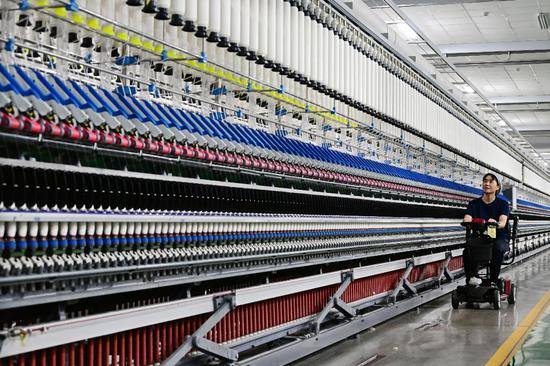Guideline eyes maximizing innovation
Authorities unveiled a guideline on improving the modern corporate system with Chinese characteristics, which analysts said will help put businesses in a better position to enhance their innovation capability, and bring competitiveness more in line with shifting market dynamics.
The guideline, along with the private sector promotion law passed in late April, will foster a more enabling business climate for private firms, which contributes more than 60 percent of China's GDP, to further unlock the nation's innovation potential, they said.
The guideline — jointly issued by general offices of the Communist Party of China Central Committee and the State Council on Monday — places high priority on incentivizing enterprises to maximize innovation.
"To help enterprises adapt to the fast-paced technological innovation landscape, it's critical to tackle the long-standing challenges of fragmentation and inefficiency in innovation," said Dong Yu, executive vice-president of the China Institute for Development Planning at Tsinghua University.
To this end, the guideline makes clear it will foster a collaborative innovation ecosystem where large enterprises can leverage their strengths to empower and support the innovation capacities of small and medium-sized enterprises.
Large enterprises typically possess stronger resources and brand advantages. The constant struggle for survival often leaves smaller business with meager profits, making it difficult to sustain high-intensity research and development investment, said Xiang Anbo, a researcher specializing in enterprise management at the Development Research Center of the State Council.
Compared to large firms, smaller firms often face greater challenges in securing financing and encounter higher costs, Xiang said.
Therefore, Xiang noted that collaborative innovation between large and small enterprises is crucial, with large firms leveraging their industry leadership to drive synchronized innovation across the upstream and downstream value chains.
Private enterprises in China have contributed some 70 percent of the country's total technological innovation achievements, and analysts stressed that more government support should be channeled toward the private sector.
The State Administration for Market Regulation said the number of private enterprises among China's national high-tech firms has significantly increased from 28,000 in 2012 to over 420,000 by the end of January. This growth has led to a substantial increase in their proportion, rising from 62.4 percent to over 92 percent of the total.
An official from the National Development and Reform Commission said that the recently issued guideline — along with the newly implemented private sector promotion law — both emphasize the importance of improving services and support for private enterprises.
Going forward, the government will implement a newly updated market access negative list, which explicitly defines sectors off-limits to private investment, thereby reducing ambiguity for businesses, the official said.
Eligible sectors will stand to benefit from favorable policies, the official said, adding that the government will steer private capital toward future industries and emerging sectors.

